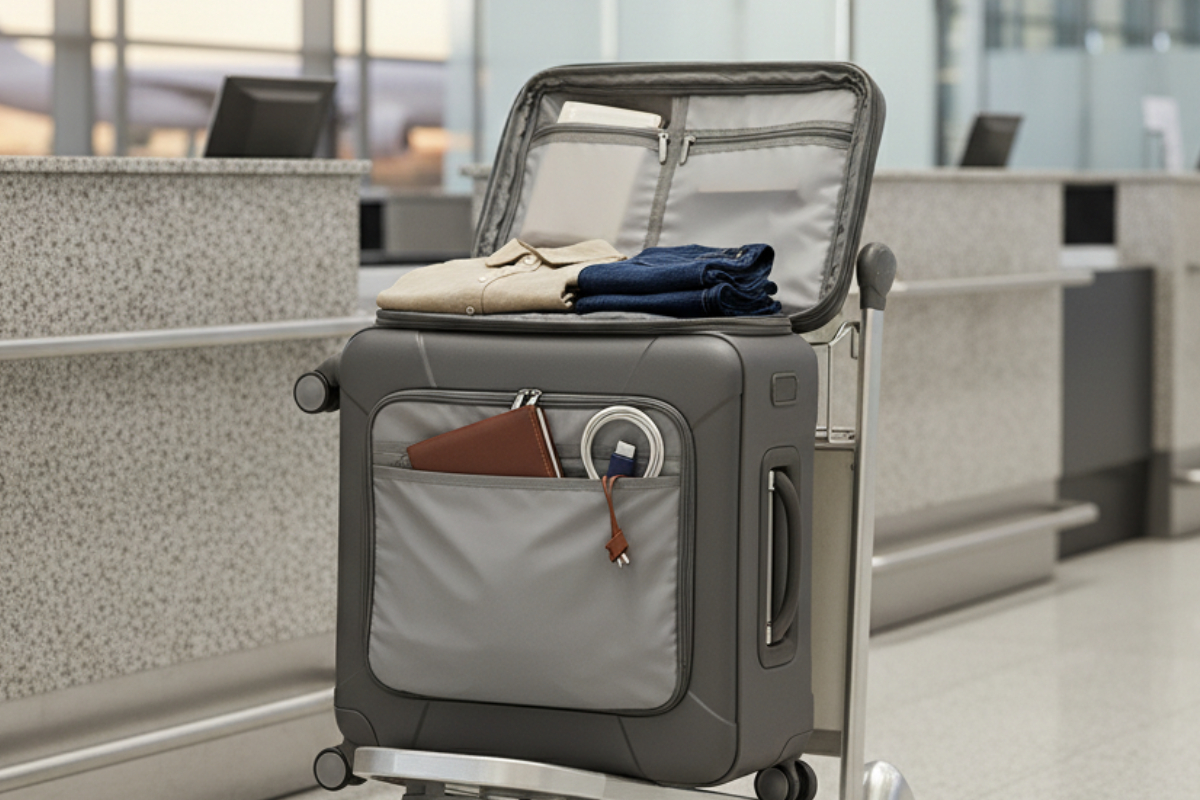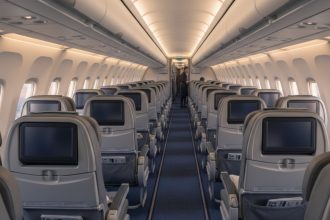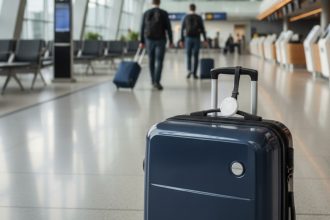A carry-on size guide for major airlines is essential for anyone planning a trip, whether you’re sharing your adventures on social media, creating content, or simply trying to make your journey smoother. Traveling can be exciting, but packing the right bag often feels like solving a puzzle. Choosing the best carry-on luggage helps ensure your bag fits airline requirements and prevents last-minute stress at the check-in counter. Knowing the exact size limits and rules saves time and helps you avoid unexpected fees. By understanding airline regulations and selecting the right gear, your next trip can start on a confident note.
Before diving into the details, let’s get a quick snapshot of the main points to keep your packing hassle-free.
Carry-On Size Guide for Major Airlines: Quick Reference
Understanding the essentials at a glance makes planning much easier. The following highlights some of the most important considerations when choosing your carry-on bag and preparing for your flight.
- Standard carry-on dimensions generally range from 22 x 14 x 9 inches, but some airlines have slightly different rules.
- Weight limits can vary, typically between 15 to 22 pounds, depending on the carrier.
- Personal items such as backpacks or laptop bags are usually allowed in addition to a carry-on.
- Premium or frequent flyer tickets may come with extra allowances.
- Packing smartly with cubes or compressible items can maximize space without violating limits.
These quick points set the stage for a more detailed explanation of airline restrictions, packing strategies, and common mistakes travelers make when relying on carry-on luggage.
Understanding Carry-On Size Rules
Before booking your flight, it’s important to understand what counts as a carry-on versus a personal item. Airlines often define carry-ons by both size and weight, but the rules can differ slightly depending on whether you’re flying domestically or internationally. Standard dimensions, around 22 x 14 x 9 inches, cover most U.S. carriers, but international airlines may enforce stricter limits.
Knowing these regulations is only part of the solution. The type of bag you choose also plays a critical role. Selecting the right luggage brands ensures durability and compliance with airline carry-on rules. For example, a lightweight hardshell suitcase can withstand overhead bin handling without adding unnecessary weight, while a soft-sided bag may fit more snugly into tight spaces. By pairing your carry-on choice with airline regulations, you reduce the risk of surprises at check-in.
Measuring your bag before heading to the airport is always recommended. Even minor differences in dimensions can matter, especially when airlines enforce size restrictions strictly. A simple tape measure can prevent the frustration of repacking under time pressure.
Major Airlines Carry-On Limits by Region
Airline rules are not one-size-fits-all, and travelers need to pay attention to differences across carriers. In the U.S., popular airlines like American, Delta, United, Southwest, and JetBlue allow carry-ons within the general 22 x 14 x 9-inch range, but weight limits may vary. Southwest, for instance, doesn’t restrict weight for carry-ons as long as you can lift your bag into the overhead bin.
International airlines often have stricter requirements. Carriers such as Emirates, British Airways, and Singapore Airlines typically enforce smaller size limits and lower weight thresholds. Some may also charge fees for additional items, so it’s wise to review airline policies before packing. Awareness of these regional differences ensures you’re prepared and avoids last-minute adjustments at the gate.
Tips for Maximizing Carry-On Space
Even small adjustments in how you pack can make a big difference in fitting everything into your carry-on. Simple strategies help you maximize space while staying within airline limits.
Use Travel Packing Cubes
Using travel packing cubes can help you fit more into your carry-on without exceeding size restrictions. These cubes allow you to separate clothing by type, compress garments, and easily access items during your flight. They keep your bag organized and save precious space that might otherwise go unused.
Fold and Roll Strategically
Smart folding techniques, like rolling clothes instead of folding, can optimize space efficiently. Smaller toiletry containers and packing soft items like scarves or jackets into gaps help protect fragile items while maximizing storage. Placing heavier items at the bottom maintains balance and prevents your bag from tipping over in the overhead bin.
Organize by Priority
Consider packing items you’ll need first on top and less frequently used items at the bottom. This approach reduces the need to unpack everything mid-flight and keeps essentials easily accessible.
Exceptions and Special Considerations
Not all travelers are limited to standard carry-on sizes. Premium passengers, frequent flyers, or those with special equipment often have different allowances. For example, musical instruments, sports gear, or baby essentials may be counted differently or require pre-approval. Contacting the airline ahead of time ensures that your special items won’t cause delays or extra fees at the airport.
Understanding these exceptions helps travelers plan better. Even small allowances can be the difference between carrying everything you need and leaving essentials behind.
Common Carry-On Mistakes to Avoid
Even experienced travelers can face unexpected challenges when packing their carry-on. A little awareness of common mistakes can prevent stress and extra fees during your journey.
Overpacking
Overpacking is the most common issue, often caused by underestimating how much space or weight your bag actually allows. Misreading size requirements or assuming all airlines follow the same rules can also create problems.
Packing Prohibited Items
Another frequent error is including items that are prohibited in carry-on luggage, such as large liquids or sharp objects. Double-checking airline policies and packing thoughtfully avoids unnecessary complications.
Lack of Preparation
Failing to plan ahead can turn a simple check-in into a stressful experience. Taking a few extra minutes to organize and review your bag ensures a smoother process from check-in to boarding.
Smart Choices with a Carry-On Size Guide for Major Airlines
Using this carry-on size guide for major airlines allows travelers to pack efficiently, avoid fees, and select the right gear. By understanding size limits, weight restrictions, and airline-specific rules, you can enjoy a smoother travel experience. Combining this knowledge with the right luggage and packing strategies ensures you bring everything you need while staying within regulations.
Being prepared reduces stress, makes the journey more enjoyable, and lets you focus on the experiences awaiting you at your destination. This guide can be your reliable companion whenever you fly, helping you make smart choices that keep your travel practical and comfortable.











